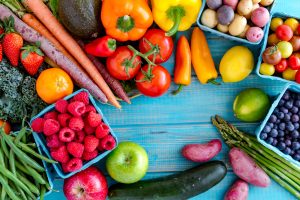Possible Costs for a Fruit Based Diet

Fruits and vegetables are rarely subsidized by the government. There are no major fruit or vegetables corporations with enough money to corrupt politicians the way other industries do. When we take everything into consideration, it is likely that fruit based diets are more affordable than the diets most Americans follow.
At first glance, cooked vegan diets may seem more affordable than fruit based diets. Luckily, it is possible to purchase fruit in ways that make it more accessible.
One way to do this is by buying fruit in bulk. When we buy in bulk, we can get discounts for our fruit. A box of bananas, for example, is usually sold for 10% less than the marked price at grocery stores. If you go to a wholesale distributor or a farmer’s market, you can get even better discounts. Some retailers may give fruit away for free when it is past their prime, and others will sell them to discount stores, where it is possible to purchase fruits and vegetables at 80% or less than their regular price.
Additionally, we can reduce our food bill by purchasing fruits that pack more calories for a lower price. Bananas are the perfect example, they are filling and affordable at the same time. Most places in the U.S. sell them for 60 cents a pound. The most expensive bananas I ever bought cost $1 per pound.
If we assume that we need to eat an average of 2,300 calories per day, and we only use bananas to reach this number, we would need about 22 regular sized bananas to meet our daily needs. These 22 bananas would weight around 5.7 pounds. If we assume the high range price of $1 per pound, we would spend less than $6 per day on bananas. That is less than $40 per week, which is a third of what half the country spends on food every week.
In fact, only 8% of the country spends less than $50 per week on food (1) , and we know they are not spending that money on a healthy diet. It is important to notice that the $40 per week estimate was calculated using the high range price for organic bananas.
If we take a more typical price, such as 60 cents per pound, and include our 10% discount for buying on bulk, we could spend less than $3.50 per day, or $25 a week.
Of course, most of us won’t enjoy eating a diet that includes nothing but bananas for the rest of our lives. We probably need more variety in our diets to meet our nutritional needs. Luckily, there other inexpensive fruits, such as watermelon, apples, pears, oranges, and grapes.
Grapes, for example, tend to cost $1.50 per pound. Let’s say we buy them in bulk, and get our 10% discount. That drops the price to $1.35 per pound. To get our 2,300 calories with grapes, we would need around 7.4 pounds per day, costing us less than $10 per day, or $70 a week. This is half of what most of the country spends on food each week. A diet of just apples would cost around $76 per week, and eating just pears could cost up to $85 per week.
Of course, these prices will vary according to the seasons, locations, stores, and whether these foods are organic or not. A small box of organic blueberries can cost as much as $5 when they are not local, or in season. Consuming a single box of these blueberries every day would increase our weekly food expense by $35 without providing a substantial caloric gain. We must be smart when it comes to what, when, and where we buy our food.
We also need to consider those who complement their fruit based diet with raw and cooked vegetables. Our weekly food budget can vary immensely, depending on our choices. Each of us is responsible to find the balance that works, and be conscious of how that affects the world around us.
Previous Section:
Next Section:
Acknowledgments
Thank you for reading!
Please donate to help us publish this book.
PayPal: trevesbruno@gmail.com
Venmo: @Bruno-Treves
Sources:
(1) http://www.gallup.com/poll/156416/americans-spend-151-week-food-high-income-180.aspx



